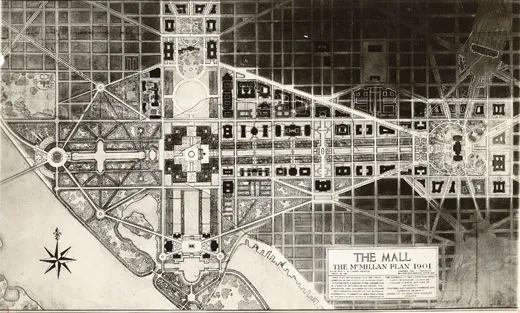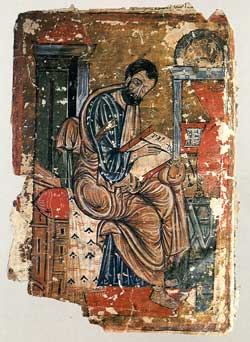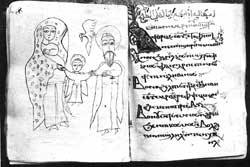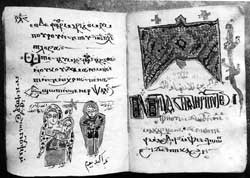|
|
General: PIERRE "PETER" CHARLES L ENFANT WASHINGTON D. C BORN IN THE GOBELINS PARIS FRANC
Elegir otro panel de mensajes |
|
|
Pierre Charles L'Enfant
This article is about the person who designed the basic plan for Washington, D.C. (capital city of the U.S.). For his father, see Pierre L'Enfant (painter). Pierre "Peter" Charles L'Enfant (French: [pjɛʁ ʃɑʁl lɑ̃fɑ̃]; August 2, 1754 – June 14, 1825) was a French-American artist, professor, and military engineer. In 1791, L'Enfant designed the baroque-styled plan for the development of Washington, D.C., after it was designated to become the capital of the United States following its relocation from Philadelphia. His work, known as the L'Enfant Plan,[1] inspired plans for other major world capitals, including Brasília, New Delhi, and Canberra. In the U.S., plans for the development of three major cities, Detroit, Indianapolis, and Sacramento, were inspired from from L'Enfant's plan for Washington, D.C.[A] [3]
Early life and education
[edit]
L'Enfant was born on August 2, 1754, in the Gobelins section of Paris, France, in the 13th arrondissement on the city's left bank.[4] He was the third child and second son of Pierre L'Enfant (1704–1787), a painter and professor at Royal Academy of Painting and Sculpture known for his panoramas of battles,[5] and Marie Charlotte Leullier, the daughter of a French military officer. In 1758, his brother Pierre Joseph died at six, and Pierre Charles became the eldest son.[6] He studied with an intense curriculum at the Royal Academy from 1771 until 1776 with his father being one of his instructors. Academy classes were held at the Louvre, benefiting from the close proximity to some of Paris' greatest landmarks, such as the Tuileries Garden and Champs-Élysées, both designed by André Le Nôtre, and Place de la Concorde. L'Enfant would have also learned about city and urban planning during his time at the academy, likely examining baroque plans for Rome by Domenico Fontana and London by Sir Christopher Wren.
He was described by William Wilson Corcoran as "a tall, erect man, fully six feet in height, finely proportioned, nose prominent, of military bearing, courtly air and polite manners, his figure usually enveloped in a long overcoat and surmounted by a bell-crowned hat -- a man who would attract attention in any assembly."[7] Sarah De Hart, daughter of New Jersey statesman John De Hart, drew a silhouette of L'Enfant in 1785, which now hangs in the Diplomatic Reception Rooms at the United States Department of State.
 Boulevard Saint Marcel in Paris, where L'Enfant grew up
After his education L'Enfant was recruited by Pierre Augustin Caron de Beaumarchais to serve in the American Revolutionary War in the United States. He arrived in 1777 at the age of 23, and served as a military engineer in the Continental Army with Major General Lafayette.[8] He was commissioned as a captain in the Corps of Engineers on April 3, 1779, to rank from February 18, 1778.[9]
Despite his aristocratic origins, L'Enfant closely identified with the United States, changing his first name from Pierre to Peter when he first came to the rebelling colonies in 1777.[10][11][12] L'Enfant served on General George Washington's staff at Valley Forge. While there, the Marquis de Lafayette commissioned L'Enfant to paint a portrait of Washington.[13]
During the war, L'Enfant made a number of pencil portraits of George Washington and other Continental Army officers.[14] He also made at least two paintings of Continental Army encampments in 1782.[15] They depict panoramas of West Point and Washington's tent at Verplanck's Point. The latter details what is believed to be "the only known wartime depiction of Washington’s tent by an eyewitness."[16] The seven-and-a-half-foot-long painting was purchased by the Museum of American Revolution in Philadelphia.
In the fall of 1779, L’Enfant contributed to the Regulations for the Order and Discipline of the Troops of the United States, authored by General Friedrich Wilhelm von Steuben. He was tasked to draft the eight "plates" or illustrations detailing camp and troop formations, as he was the only artistically trained individual involved. The "Blue Book" was completed by April 1779, receiving approval from General Washington and Congress. For his efforts, Congress awarded L’Enfant $500 and officially promoted him to captain of engineers, retroactive to February 1778.
L'Enfant was wounded at the Siege of Savannah on October 9, 1779. He recovered and became a prisoner of war at the surrender of Charleston, South Carolina, on May 12, 1780. He was exchanged in November 1780 and served on General Washington's staff for the remainder of the American Revolution. While the historical consensus generally attributes the creation of the Badge of Military Merit, later known as the Purple Heart, to George Washington in 1782, there is an implied claim by Pamela Scott, Washington D.C. historian and former editor of The L'Enfant Papers at the Library of Congress, that L'Enfant may have conceived the medal's design. L'Enfant was promoted by brevet to Major in the Corps of Engineers on May 2, 1783, in recognition of his service to the cause of American liberty. He was discharged when the Continental Army was disbanded in December 1783.[17] In acknowledgment of his Revolutionary War contributions, L'Enfant received 300 acres of land in present-day Ohio from the United States. However, he never set foot on or resided in the granted land. A map outlining the territory was sketched on the reverse side of a segment of L'Enfant's land deed, signed by President Thomas Jefferson on January 13, 1803.[18]
Post–Revolutionary War
[edit]
 Alexander Hamilton Alexander Hamilton, who supported L'Enfant and helped him secure work in Paterson, New Jersey after he was dismissed from the federal city project
Following the American Revolutionary War, L'Enfant settled in New York City and achieved fame as an architect by redesigning the City Hall in New York for the First Congress of the United States (See: Federal Hall).[19]
L'Enfant also designed furniture and houses for the wealthy, as well as coins and medals. Among the medals was the eagle-shaped badge of the Society of the Cincinnati, an organization of former officers of the Continental Army of which he was a founder. At the request of George Washington, the first President of the Society, L'Enfant had the insignias made in France during a 1783–84 visit to his father and helped to organize a chapter of the Society there.[20]
In 1787, L'Enfant received an inheritance upon his father's death that included a farm in Normandy[citation needed]. His military pension and success as a designer provided financial stability enabling him to pursue his career and contribute to various projects for a period of time. While L'Enfant was in New York City, he was initiated into Freemasonry. His initiation took place on April 17, 1789, at Holland Lodge No. 8, F & A M, which the Grand Lodge of New York F & A M had chartered in 1787. L'Enfant took only the first of three degrees offered by the Lodge and did not progress further in Freemasonry.[21]
L'Enfant designed the "Glory" ornamentation above the altar in St. Paul's Church. The chapel, built in 1766, is the oldest continuously used building in New York City. George Washington worshipped there on his inauguration day. The intricate design vividly depicts Mt. Sinai amidst clouds and lightning, capturing the dramatic moment of divine revelation. At the center of the piece is the Hebrew word for "God" enclosed within a triangle, symbolizing the Holy Trinity. Below, the two tablets of the Law are inscribed with the Ten Commandments, highlighting the enduring significance of these foundational moral laws.
L'Enfant was also a close friend of Alexander Hamilton. Some of their correspondences from 1793 to 1801 now reside in the Library of Congress.[22] Hamilton is credited with helping L'Enfant with the federal city commission.
|
|
|
 Primer
Primer
 Anterior
2 a 4 de 4
Siguiente
Anterior
2 a 4 de 4
Siguiente
 Último
Último

|
|
|
A Brief History of Pierre L’Enfant and Washington, D.C.
How one Frenchman’s vision became our capital city
Kenneth R. Fletcher
Digital Editorial Director
April 30, 2008
/https://tf-cmsv2-smithsonianmag-media.s3.amazonaws.com/filer/brief-lenfant-631.jpg) View of the National Mall Courtesy of the National Park Service
Today's Washington, D.C. owes much of its unique design to Pierre Charles L'Enfant, who came to America from France to fight in the Revolutionary War and rose from obscurity to become a trusted city planner for George Washington. L'Enfant designed the city from scratch, envisioning a grand capital of wide avenues, public squares and inspiring buildings in what was then a district of hills, forests, marshes and plantations.
The centerpiece of L'Enfant's plan was a great "public walk." Today's National Mall is a wide, straight strip of grass and trees that stretches for two miles, from Capitol Hill to the Potomac River. Smithsonian museums flank both sides and war memorials are embedded among the famous monuments to Lincoln, Washington and Jefferson.
L'Enfant and the Capital
Washington D.C. was established in 1790 when an act of Congress authorized a federal district along the Potomac River, a location offering an easy route to the western frontier (via the Potomac and Ohio River valleys) and conveniently situated between the northern and southern states.
President Washington chose an area of land measuring 100 square miles where the Eastern Branch (today's Anacostia River) met the Potomac just north of Mount Vernon, his Virginia home. The site already contained the lively port towns of Alexandria and Georgetown, but the new nation needed a federal center with space dedicated to government buildings.
Washington asked L'Enfant, by then an established architect, to survey the area and recommend locations for buildings and streets. The Frenchman arrived in Georgetown on a rainy night in March 1791 and immediately got to work. "He had this rolling landscape at the confluence of two great rivers," said Judy Scott Feldman, chairwoman of the National Coalition to Save Our Mall. "He essentially had a clean slate on which to design the city." Inspired by the topography, L'Enfant went beyond a simple survey and envisioned a city where important buildings would occupy strategic places based on changes in elevation and the contours of waterways.
While Thomas Jefferson had already sketched out a small and simple federal town, L'Enfant reported back to the president with a much more ambitious plan. For many, the thought of a metropolis rising out of a rural area seemed impractical for a fledgling nation, but L'Enfant won over an important ally. "Everything he said, a lot of people would have found it crazy back then, but Washington didn't," says L'Enfant biographer Scott Berg.
His design was based on European models translated to American ideals. "The entire city was built around the idea that every citizen was equally important," Berg says. "The Mall was designed as open to all comers, which would have been unheard of in France. It's a very sort of egalitarian idea."
L'Enfant placed Congress on a high point with a commanding view of the Potomac, instead of reserving the grandest spot for the leader's palace as was customary in Europe. Capitol Hill became the center of the city from which diagonal avenues named after the states radiated, cutting across a grid street system. These wide boulevards allowed for easy transportation across town and offered views of important buildings and common squares from great distances. Public squares and parks were evenly dispersed at intersections.

The MacMillan Commission's plan of Washington, D.C. Worthy of the Nation: Washington, DC, from L’Enfant to the National Capital Planning Commission
Pennsylvania Avenue stretched a mile west from the Capitol to the White House, and its use by officials ensured rapid development for the points in between. For the rural area to become a real city, L'Enfant knew it was crucial to incorporate planning strategies encouraging construction. But his refusal to compromise led to frequent clashes that eventually cost him his position.
City commissioners who were concerned with funding the project and appeasing the District's wealthy landowners didn't share L'Enfant's vision. The planner irked the commissioners when he demolished a powerful resident's house to make way for an important avenue and when he delayed producing a map for the sale of city lots (fearing real estate speculators would buy up land and leave the city vacant).
Eventually, the city's surveyor, Andrew Ellicott, produced an engraved map that provided details for lot sales. It was very similar to L'Enfant's plan (with practical changes suggested by officials), but the Frenchman got no credit for it. L'Enfant, now furious, resigned at the urging of Thomas Jefferson. When L'Enfant died in 1825 he had never received payment for his work on the capital and the city was still a backwater (due partly to L'Enfant's rejected development and funding proposals).
Through the 1800s to the McMillan Commission
A century after L'Enfant conceived an elegant capital, Washington was still far from complete.
In the 1800s, cows grazed on the Mall, which was then an irregularly shaped, tree-covered park with winding paths. Trains passing through a railroad station on the Mall interrupted debate in Congress. Visitors ridiculed the city for its idealistic pretensions in a bumpkin setting and there was even talk after the Civil War of moving the capital to Philadelphia or the Midwest.
In 1901, the Senate formed the McMillan Commission, a team of architects and planners who updated the capital based largely on L'Enfant's original framework. They planned an extensive park system, and the Mall was cleared and straightened. Reclaimed land dredged from the river expanded the park to the west and south, making room for the Lincoln and Jefferson memorials. The Commission's work finally created the famous green center and plentiful monuments of today's Washington.
L'Enfant and Washington Today
Some of L'Enfant's plans, including a huge waterfall cascading down Capitol Hill, were never realized. But the National Mall has been a great success, used for everything from picnics to protests. "The American people really took to the Mall in the 20th century and turned it into this great civic stage," Feldman says. "That was something that Pierre L'Enfant never envisioned ... a place for us to speak to our national leaders in the spotlight." It has become so popular that officials say it is "terribly overused," as evidenced by worn grass and bare patches of earth.
John Cogbill, chairman of the National Capital Planning Commission which oversees development in the city, says the Commission strives to fulfill L'Enfant's original vision while meeting the demands of a growing region. "We take [L'Enfant's plan] into account for virtually everything we do," he says. "I think he would be pleasantly surprised if he could see the city today. I don't think any city in the world can say that the plan has been followed so carefully as it has been in Washington."
https://www.smithsonianmag.com/arts-culture/a-brief-history-of-pierre-lenfant-and-washington-dc-39487784/ |
|
|
|
|
Cuadro: Alejandría, la Jerusalem egipcia
Anteriormente a los romanos, 300 años antes del nacimiento de Jesús, Alejandro Magno murió sin descendencia, por lo que su imperio se dividió entre sus generales, siendo Ptolomeo el que quedó a cargo del país de las pirámides. Con ello se creó un sincretismo entre los antiguos dioses egipcios y los helénicos. Toth pasó a ser Hermes, y su famoso libro dio origen a la famosa Tabla Esmeralda, e Imhotep, dios de la medicina, fue asimilado con Asclepios. Surgieron nuevos dioses como el adorado Serapis, dios artificial creado a partir del dios egipcio Asar-Hapis (Osiris-Apis), que pasó a ser el esposo de Isis, cuyo culto se desarrolló por todo el Mediterráneo. La adoración a Isis llevó consigo la celebración del nacimiento de Horus, conocido como Harpócrates por los griegos e identificado on ÇApolo y el Sol Invictus por los romanos.

San Marcos
Tras la muerte de Cleopatra (30 a.C.), quien fue una alta sacerdotisa de Isis, Egipto se convirtió en una provincia romana. Alejandría, capital cultural de Egipto, reunía una gran cantidad de filósofos griegos, romanos y judíos escapados de Judea, que fueron desarrollando un culto común en la creencia de que la inmortalidad se conseguía gracias a la iniciación de un “Hijo de Dios muerto y resucitado”, en donde la muerte y el renacimiento era simbolizado por el nacimiento de Horus. El Adonis fenicio, el Attis frigio, el Osiris Egipcio, el Serapis alejandrino todos ellos fueron hijos de dios. Los romanos habían importado de Egipto el culto de Mitra, “Hijo de Dios muerto y resucitado”, cuyo cumpleaños se celebraba el 25 de diciembre.
Con este escenario de creencias hace aparición en Alejandría el cristianismo. La fecha del nacimiento de Mitra fue adoptada por los primeros cristianos como fecha del nacimiento de Jesús, hecho asociado a la señal en el cielo que marcaba una estrella de oriente. Pese que el apóstol que evangelizó Egipto fue Marcos, padre de la iglesia copta, es el evangelio de Mateo el único que nos habla del viaje realizado por la Sagrada Familia a Egipto. Los expertos aseguran que dicho evangelio fue escrito en Alejandría entre los años 40 y 80 d.C. por personas que no podían mantenerse ausentes de los acontecimientos astronómicos que se celebraban desde los antiguos egipcios. Por aquellas fechas en la noche del 25 de diciembre se podía ver ascender por el horizonte las tres estrellas del cinturón de Orión, los tres “reyes” que antecedían la salida de la estrella de oriente, Sirio, que si antiguamente simbolizaba a Isis de la que nació Horus, se transformo en época cristiana en la Madona que daba luz al niño Jesús. Las tres estrellas se convirtieron en la tradición en los Reyes Magos de Oriente.
Por el efecto de la precesión de los equinoccios, la estrella Sirio permanece 72 días al año bajo el horizonte, por lo que no se puede ver. Después de este periodo la estrella vuelve a verse, momento en que se conmemoraba en el Antiguo Egipto el año nuevo. La simbología era la del nacimiento del Horus divino desde el vientre de su madre Isis, representada por dicha estrella. El acontecimiento astronómico varía 8,5 días cada 1000 años. Actualmente el orto helíaco de Sirio se produce el día 5 de agosto, mientras que época de Jesús el hecho se producía el 19 de julio. Es por ello por lo que cuando los romanos cambiaron su calendario lunar a otro solar, de la mano del astrónomo alejandrino Sosígenes, se nombró al mes de salida de la estrella de Sirio con el nombre de Julio César, en ese nuevo calendario “juliano” que no era otra cosa que la continuidad que tuvieron los egipcios durante 3300 años a la hora de medir el tiempo.

Fortaleza Babilonia, Iglesia
El misterio del nacimiento de Horus, nacido de la virgen Isis, tenía por tanto continuidad en la liturgia cristiana, ideas tradicionalmente aceptadas que favorecieron la expansión del cristianismo en tierras egipcias. Un concepto de muerte y resurrección que ha llegado hasta nuestros días ya que, por azares del destino o por causalidades misteriosas, en la pasada noche del 31 de diciembre del año 1.999, cuando todo el mundo se preparaba para la festividad de la entrada del tercer milenio, Sirio marcaba su culminación en el meridiano. Si el helicóptero hubiera colocado (cosa que al final no ocurrió) el piramidión dorado sobre la cúspide truncada de la Gran Pirámide, se podría haber visto mirando desde la cara norte del monumento a Sirio colocado sobre la cúspide, alineado correctamente con el canal sur de ventilación de la cámara de la Reina. Es seguro que muchas sociedades secretas, que muchos estudiosos de los cultos isíacos, considerasen ese momento como el que anunciara la segunda venida de Horus, o de Jesucristo.
Resulta curioso que el único de los discípulos que visitó Egipto fuese Marcos, cuando el único que en los evangelios habla de Egipto fuese Mateo. La tradición oculta esotérica, recogida en sectores de librepensadores, afirma que si por un lado Mateo configuraba las normas de la Iglesia Marcos ofrecía un cristianismo que fue acogido por las corrientes gnósticas.
Hasta el nacimiento del cristianismo todos los adeptos a las diferentes liturgias debían pasar por una iniciación más o menos extensa. El cristianismo rompió esa tradición ya que para pertenecer al grupo sólo se debía profesar la creencia como acto de fe. Fue entonces cuando se produjo la ruptura entre los que, como los antiguos egipcios, el conocimiento era el camino hacia la iluminación, y los que dejaban en manos de la incipiente Iglesia su “salvación”. Una diferenciación que, a lo largo del tiempo, se convirtió en verdaderas persecuciones de los poderosos contra los sectarios y produjo el oscurantismo religioso y científico cuyos flecos han llegado hasta nuestros días pese a los esfuerzos realizados durante el Renacimiento.
 
En Alejandría se gestó, o pudo gestarse el pensamiento que ha predominado los últimos dos milenios. Los sabios que moraban en sus casas tuvieron la capacidad de combinar el hábito por la meditación con el desarrollo de la cosa pública, algo que iba en contra de unos poderes a los que no interesaba que el pueblo tuviera un acceso a la divinidad distinto al que propocionaba sus arcas. Y cuando en marzo del año 415 los cristianos enardecidos por el patriarca de Alejandría asesinaron a Hipatia no sólo acabaron con la mujer más notable de la Antigüedad, sino que obligaron a los herederos de la filosofía griega, a los seguidores de Horus, a refugiar su culto a ojos profanos. En Belén nació Jesús, en Alejandría volvió a nacer, como lo había hecho varias veces a lo largo de los tiempos.
http://manueljosedelgado.wordpress.com/tag/jesus-en-egipto/
|
|
|
 Primer
Primer
 Anterior
2 a 4 de 4
Siguiente
Anterior
2 a 4 de 4
Siguiente
 Último
Último

|
|
| |
|
|
©2025 - Gabitos - Todos los derechos reservados | |
|
|

